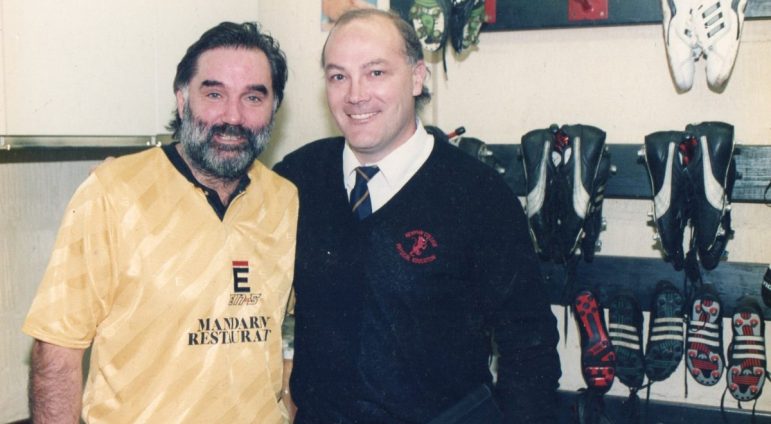AS PART of FA Cup semi-final weekend, Midlands-born Brian Beard takes a look at the beautiful game and its history in this new feature.
Brian worked on the Redditch Indicator and played for Warwick Arms FC and Redditch United before embarking on a career as a teacher.
Then the New York Cosmos trialist moved into a career in journalism which saw him become a ghost writer for George Best,
The Associate Historian to the Football Association and onto Sky Sports where he became the first reporter to amass 1,000 games covered in a career total of 2,500 games covered.
Nowadays football historian Brian runs a business writing autobiographies.
Looking back at how The Beautiful Game began
If a modern day fan could be transported back to witness a football match in the mid 19th century they would not recognise the spectacle before them which was not the game we know in 2024.
For a kick-off, note the play on words there, before codification by the Football Association in 1863, football games were either between villages or educational establishments such as public schools and universities.
Those encounters were a combination of football, rugby with a few elements of cage-fighting and WWE thrown in for good measure, often with the sides playing to different rules.
Games were such a mish-mash of handling the ball and handling the man that confusion was rife whenever inter-district or inter-regional clashes were concerned. Imagine the debacle when one team favoured playing the ball with feet, football, while their opponents engaged in `hacking`, quite literally hacking an opposing player to the ground, more akin to rugby.
The sport`s popularity grew in the mid-Victorian era but football was still in turmoil due to the different codes played in different areas, sometimes even neighbouring areas. Then in 1848 university students drew up 11 rules, known as the Cambridge Rules. Ten years later Sheffield Rules were drawn up with more than slight deference to the Cambridge Rules and it was in the Yorkshire city the game flourished and by 1875 there were 200 football clubs in the Sheffield area, more than half of the 370 football clubs in the world at that time.
The Football Association was formed in 1863 and, very much based on the Sheffield Rules, established the world`s first set of codified rules for Association Football. But that wasn`t the end of the varying rules under which football games were still played with rugby and football variabes still widespread.
Eventually, in 1871, a breakaway occurred and the Rugby Football Union was established, so for the first time rugby and football separated into two distinctly different sports.
Eventually, in 1891, the rugby fraternity split further when 22 northern clubs formed the Northern Rugby Football Union because they wanted to compensate working class players for loss of earnings while the predominantly southern RFU wished steadfastly to retain amateurism.
Ironically professionalism was a blight on Association Football from the get-go with illegal payments rife, but the establishment of the new Football League, in 1888-89, just five years after professionalism was legalised in 1885, allowed clubs to pay their players legitimately.
Before then club owners would pay what was called `boot-money` leaving payment in players` boots while they were participating in games so they received their remuneration when they changed into their civilian clothes afterwards.
To call the formative years of football ingratiating into our national culture experimental would be an understatement. Rule changes were regular and getting used to them was as fraught as VAR is today.
For instance teams changing around for half-time had little to do with weather conditions, slope, sun or supporters behind a goal. Before codification if teams in a match played to different rules the first half would be played under the rules of one of the teams and after an interval the second period would be played under the other side`s rules.
Mid-Victorian games were adjudicated by umpires not referees and matches were started by a ball being tossed up in the air.
There were no whistles until 1878 prior to then umpires waved a handkerchief or a stick or just shouted when they were called upon to make a ruling.
I wonder what a football fan from 1850 would make of today`s game if he could travel through time.
Anyone who wants to contact Brian for more on having an autobiography commissioned should email [email protected] for more.











